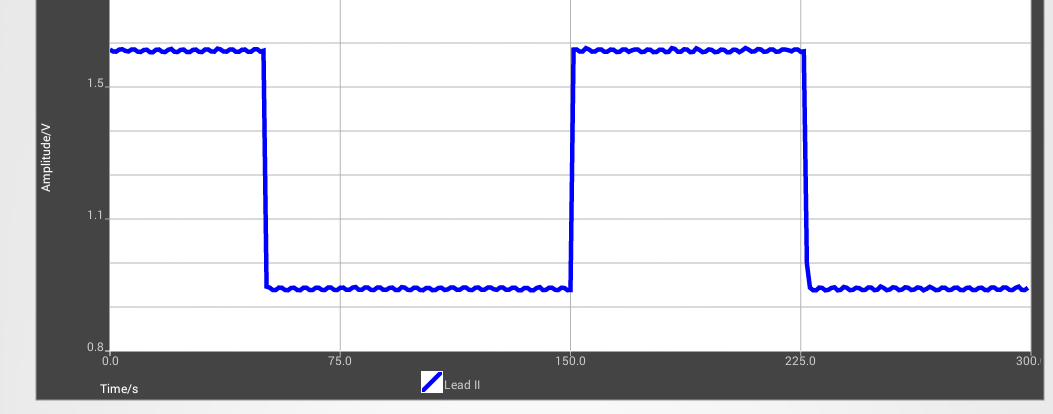Hello,
I am using CC2541 to sample and transmit ECG signals. But the result shows there is something wrong with the ADC sampling.
I try to input a 1Hz sin signal to P0_0, and the code is based on "SimpleBLEPeripheral". Reference voltage is AVDD(3.3V). The period sampling task is called every 5ms. The sampling code is as following:
reading=HalAdcRead(0,HAL_ADC_RESOLUTION_14);
ECGData1[counter] = ( reading >> 8);
ECGData1[counter+1] = (reading & 0xff);
When there are 20 samples, the data is transmitted to the Smartphone.
But on the smartphone, the received signal is as the following figure. But if I input a static voltage or decrease the amplitude of sin signal to below 40mV, the result is right. I can not find out the reason for this result. Can anyone help me?




